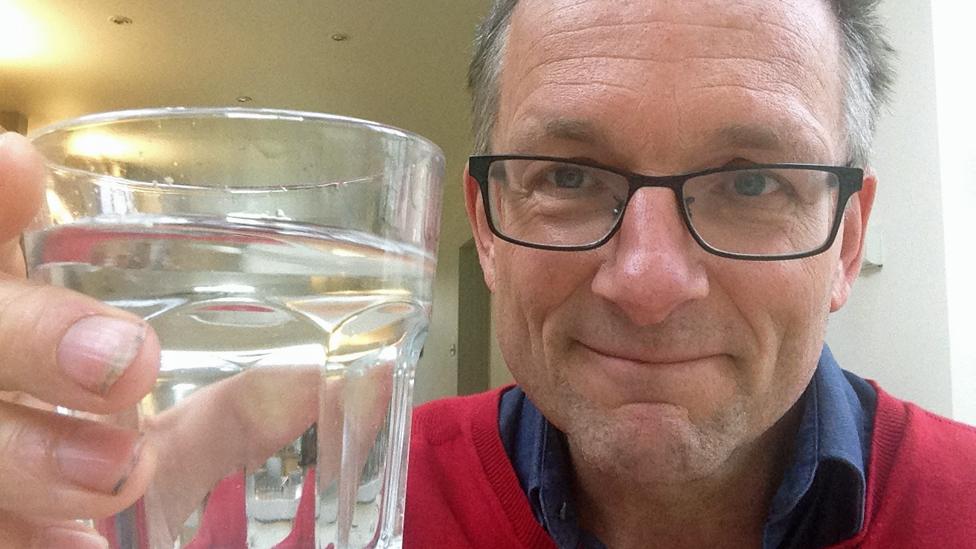Alcohol guidelines: The BBC's Nick Triggle answers your questions
- Published
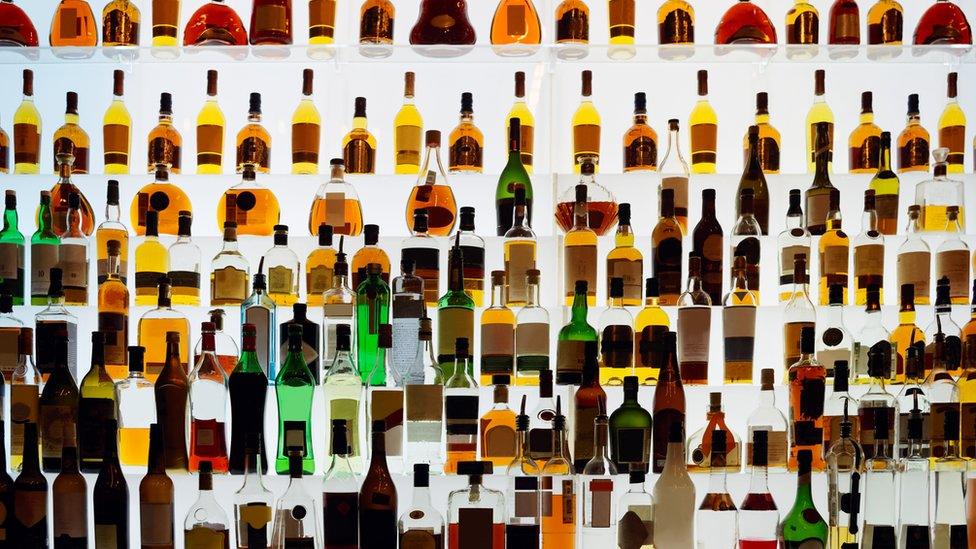
New guidelines have been issued on alcohol consumption which significantly reduce the recommended safe drinking level.
Latest research shows that any amount of alcohol can increase the risk of cancer.
The advice is that men and women who are frequent drinkers should consume no more than 14 units a week. It also suggests that pregnant women should not drink at all.
BBC health correspondent Nick Triggle took part in a Facebook Q&A where he answered your questions, external about the new recommended limit.

Gabhan Padraig Bradley, external asks: Well, if there's no safe limit, then why limit yourself at all..??
Nick answers: Hi Gabhan, Nick here. The point the guidance is making is that the more you drink the higher the risk. The 14 units limit was chosen because that is the point at which the risk goes above 1% chance of dying from your drinking. That risk of dying early is roughly the same as eating bacon sandwiches several times a week or driving in a car, ie. it's the sort of risk we have doing everyday tasks. But once you go above that the risk gets higher.
Gary Topley - alcohol awareness specialist -, external asks: Even though guidelines should be in place, I think they will be largely ignored. After all, how many knew what the last ones were? We have to look at this realistically and think how many people who go out with their mates on a weekend, as an example, will think: "I better check the guidelines first". When I was drinking, I would have paid no attention at all. There needs to be something more consistent which people can see all the time.
Nick answers: This is one of the main criticisms of guidance like this. A lot of campaigners are arguing the advice needs to be followed by public health marketing campaigns and clearer labeling on alcohol products. The government, for its part, has said these are under consideration. Nick

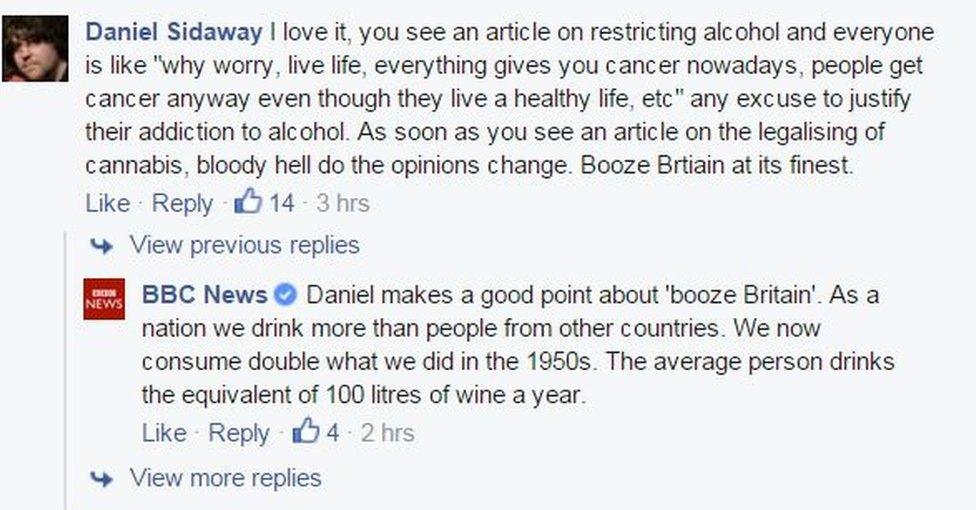

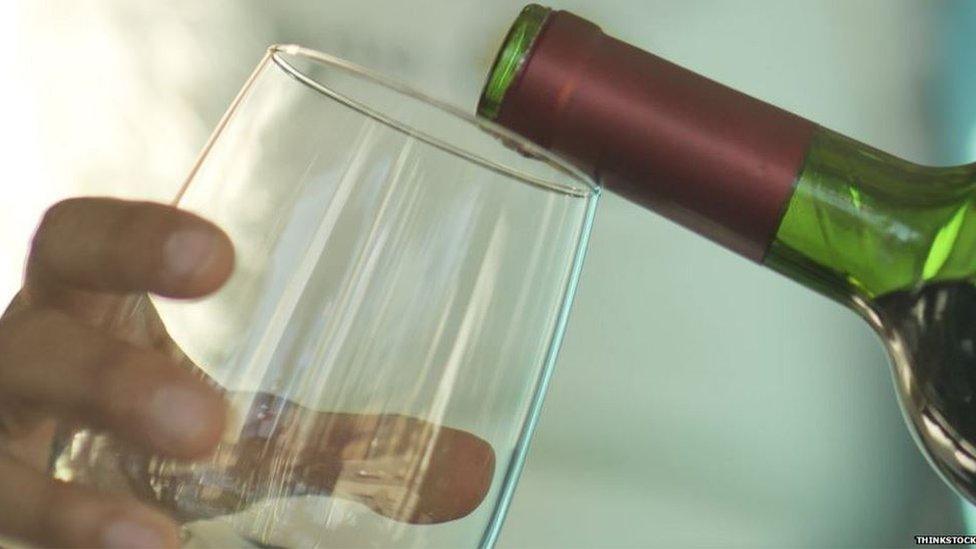

Matt Sharp, external comments: It's only a recommendation. People are free to ignore it if they wish, but should at least be informed before making a decision.
Nick answers: This is indeed how the chief medical officer, who is behind this guidance, has defended herself. One of the criticisms is that the threshold that has been set is quite low in comparison to other countries. For example in Spain men are advised they can drink twice as much, while in France there is no guidance. At the end of the day, drinking isn't being banned. The guidance says it is up to people how they react to it. Nick
Sharon Bradbury, external asks: I would like to know why should we believe this report over all the others that say some alcohol has health benefits ie, red wine. There are so many contradicting reports it's confusing for people to get to the truth!
Nick answers: A lot of people have flagged up that there is conflicting evidence out there. One of the reasons the guidance has been issued is that there has been so much evidence published. So this has attempted to review what is out there and come up with some definitive advice. The advice is there, it says, to inform. It is up to people to decide what they do with it. But on the benefits of drinking, it is clear this only stands for women aged 55 and over - and then only when they limit themselves to five units a week. That's about two glasses of wine.

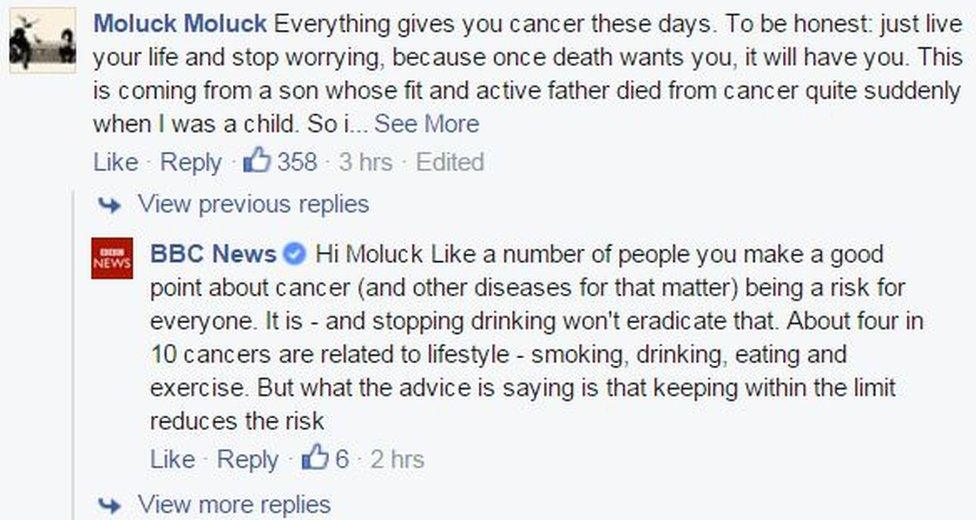

On the research of alcohol units, Celia Courtney, external comments: Unwise amounts are shown, most modern wines are 13-14%, many real ales are 4.3-4.5%, if advice is given it must be realistic, please.
Nick answers: Hi Celia, this is one of the problems with alcohol advice. Studies show people tend not to understand units, but as drinks can vary in strength how much can be drunk changes depending on what you drink. It's a challenge for journalists and experts!
You can read the whole Facebook Q&A session here, external.
- Published8 January 2016

- Published8 January 2016
- Published8 January 2016
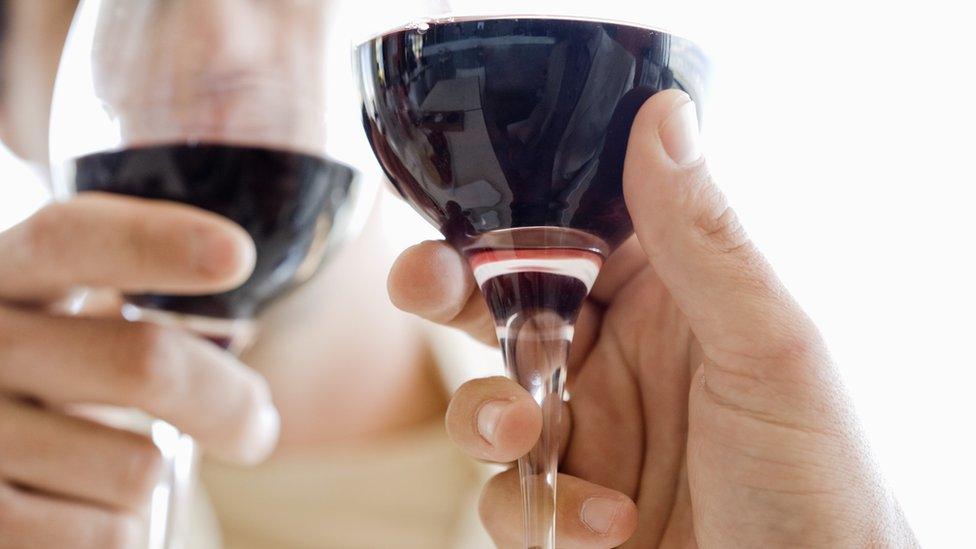
- Published8 January 2016
